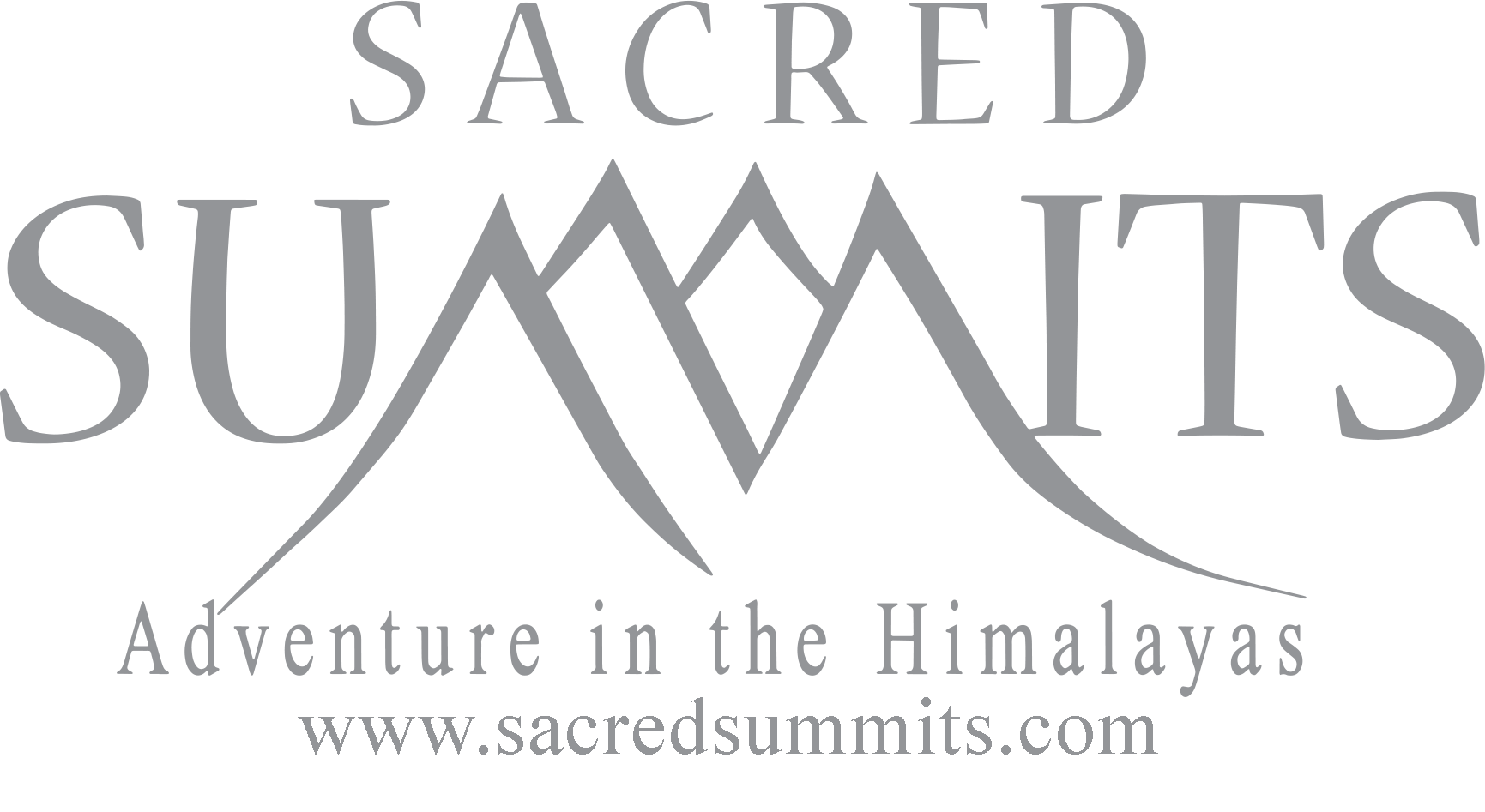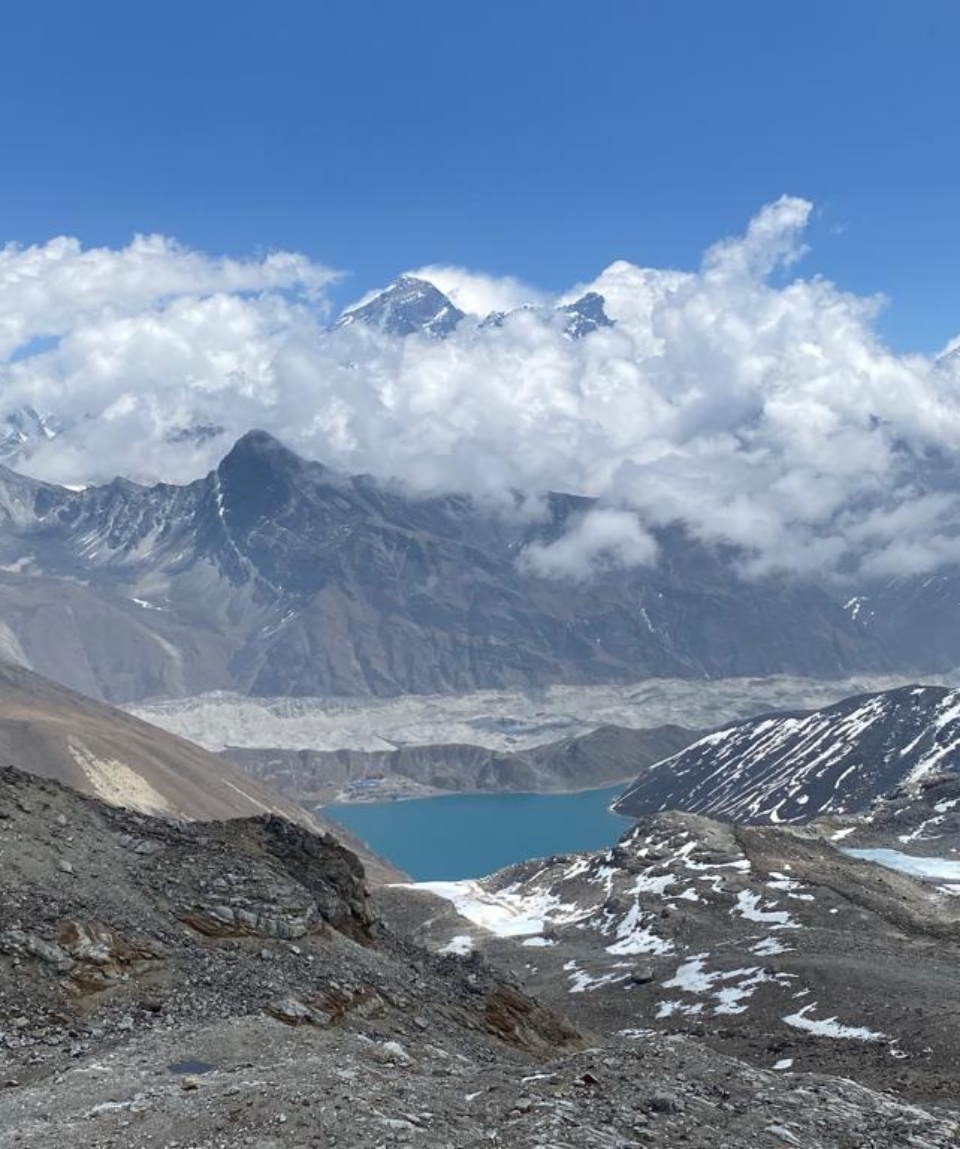EVEREST BASE CAMP TREK WITH TWO HIGH PASSES (RENJO LA (5340m) & CHOLA PASS (5595m)
-
Reviews 0 Reviews0/5
-
Vacation Style Holiday TypeTrekking
-
Activity Level Strenuous
-
Group Size Medium Group
Nepal – a landlocked country is one of the richest countries in the world in terms of bio-diversity due to its unique geographical position and altitudinal variation. The elevation of the country ranges from 60 meters above sea level to the highest point on earth, Mt. Everest at 8,848 meters, all within a distance of 150 kilometers resulting in climatic conditions from sub-tropical to Arctic.
Nepal is known as “Land of Himalayas” the world over. There are 1,310 peaks above 6000 meters of which 238 are already opened for climbing. Likewise, out of fourteen 8000 meters above peaks eight of them, including the highest peak in the world, Mount Everest lie in Nepal. Other seven are namely Kanchenjunga, Lhotse, Makalu, Cho Oyu, Dhaulagiri, Manaslu and Annapurna.
This trek to Everest Base Camp is probably the only trail in the world where so many mighty and magnificent Himalayas can been seen at such close proximity.
Mount Everest is also known by the Tibetan name Chomolangma (goddess mother of the snows), and by the Nepali name Sagarmatha (Mother of the Universe).
Renjo-La Pass is one of the underrated trekking routes in Nepal which offers the exploration of the remote but naturally rich areas of Khumbu region. Renjo-La Pass (5360m) is one of the three high passes of Everest region crossing which the pristine Gokyo lakes can be reached. Renjo-La Pass Trek is a strenuous trek yet fulfilling trek which rewards the trekkers with Sherpa culture and Himalayan landscape.
Chola Pass is one of the most fashionable treks in the Everest region. This trek links Everest Base Camp and Gokyo Valley with adventurous Chola Pass crossing over 5417 meter mountain pass. It covers not only Everest Base Camp but also Lukla, Namche Bazar, Tengboche as whole Solukhumbu (Distric) and some nice peaks (like Gokyo Ri or Kala Patthar)
The Everest Base Camp Trek takes one to the foothills of the mightiest of the mountains in the world. En-route, traverse through rhododendron and pine forests, rivers, Sherpa villages and Buddhist Monasteries from temperate to snow line regions. The Himalayas are best seen on this trek as one traces the main route through the Khumbu region from the Sherpa town of Namche Bazaar. Trekkers get a close view of the world’s greatest mountains, Everest, Lhotse, Nuptse, Thamserku, Tawache and others.
Located in the eastern half of Nepal, the Everest region offers a wide range of trekking experiences. From the well-developed trail to Everest base camp to treks in remote semi-wilderness areas, there is a choice to suit all-corners. The most frequented part of the region is located in Solukhumbu district, the home of the legendary Sherpa’s. The northern part of the district (Khumbu) is encompassed in the Everest National Park, which was established to protect the fragile environment of the alpine region.
- Arrival transfer from airport to hotel in a private deluxe car accompanied by a member of Sacred summits P.LTD
- Welcome Dinner and Farewell Dinner with transfer and accompanied by a member of Sacred summits P.LTD
- 4 nights stay at Hotel Manaslu (3 star) OR Similar in Kathmandu on bed and breakfast basis and inclusive of all taxes (presently 24.3%)
- Full days sightseeing tour of Pashupatinath Temple + Boudhanath Stupa & Swayambhunath in a private deluxe car accompanied by a knowledgeable English speaking guide.
- Transfer from Kathmandu to Ramechap (Pre Trek) in a private a/c car accompanied by a Trek Guide/Sirdar.
- 01 night stay at Freedom Resort OR Similar in Ramechap on bed and breakfast basis and inclusive of all taxes (presently 24.3%)
- Airfare for the sector Ramechap / Lukla / Ramechap
- Airfare for the guide for the sector Kathmandu / Lukla / Kathmandu inclusive of all the airport taxes.
- Khumbu Development Fee of USD 33.00 per person. (Subjected to change without prior notice)
- Package Trek (Full Board on Trek) includes 17 Nights / 18 Days trek in the Everest/ Gokyo / Khumbu Region inclusive of accommodations in a standard Lodges / Guest houses (Rooms with attached baths will be provided as per availability at Phakding (1 night), Namche (2 nights), Gokyo (2 nights), Periche (1 night), Lukla (1 night) and all meals (breakfast + Lunch + Dinner) prepared by the cook at the Tea Houses / Lodges from the menu upon discussion with the group’s preference and the things that are available.
- Services of an experienced (knowledgeable and trained in high altitude and first aid) Trek Sirdar /Escort/Guide from Sacred Summits (P) Ltd.
- Services of 1 locally hired porter to carry the luggage during the trek (1 porter carry’s 25 kilograms)
- All expenses for the guide and support staff including their daily allowances which includes their meals and accommodations as well.
- Transfer from Ramechap to Kathmandu (Post Trek) in a private a/c car accompanied by a Trek Guide/Sirdar.
- Contribution to Guide and Porter Insurance
- A comprehensive medical kit
- Final departure transfer from hotel to airport in a private deluxe car accompanied by a member of Sacred Summits (P) Ltd
- Government taxes and tolls and entrance fees where applicable.
- International Airfares.
- Nepal Visa fees (If applicable).
- Covid-19 Related PCR TEST AND Insurance
- Meals (Lunch & Dinner) while the guest stay at hotels in Kathmandu. (Except Breakfast and Welcome and Farewell Dinner)
- Items of a personal nature such as boiled water, mineral water, bar bills telephone calls, laundry, extra mileage and any extra costs incurred due to natural calamities, flight delays etc.
- Personal medication
- Any kind of Insurance (Personal Insurance/Third party insurance /Covid Insurance/ Insurance for or against accidents, loss of life, theft etc).
- Costs incurred due to cancellation of flights, altitude sickness or unforeseen circumstances (riots, natural calamities etc) and situations beyond the control of Sacred Summits (P) Ltd.
- Tips for the trek staff (guide + Porter)
- Any item not mentioned in the above ‘cost includes’.
- Day 01 Arrive Kathmandu (1370 M)
- Day 02 Full day sightseeing tour in Kathmandu
- Day 03 Drive Kathmandu to FREEDOM RESORT (164kms/4hrs)
- Day 04 Fly from Ramechap to Lukla (2880m) and trek to Phakding (2652m)
- Day 05 Trek from Phakding to Namche Bazaar (3440 m)
- Day 06 Rest and acclimatization at Namche Bazaar
- Day 07 Trek from Namche to Thame (3820M
- Day 08 Trek from Thame to Marlung (4210 m)
- Day 09 Trek from Marlung to Renjo La Base (4650 m)
- Day 10 Trek from Renjo La Base to Gokyo (4790 M
- Day 11 Excursion to Gokyo RI (5,483 m) and back
- Day 12 Trek from Gokyo to Chyugima (5,040 m)
- Day 13 Trek from Chyugima to Dzongla (4843 m) via Chola Pass(5595m)
- Day 14 Trek from Dzongla to Lobuche (4,931 m
- Day 15 Trek from Lobuche to Gorakshep (5180m) / Everest Base Camp (5360m) and Back
- Day 16 Early morning excursion to - Kalaphattar (5545 m) & descend to Periche (4240m)
- Day 17 Trek from Periche to Ama Dablam B.C(4600 M) to Pangboche (3930 M)
- Day 18 Trek from Pangboche to Khumjung (3753 m)
- Day 19 Trek from Khumjung) to Monjo via Namche (3440 M
- Day 20 Trek from Monjo to Lukla (2880 M)
- Day 21 Fly Lukla to Ramechap and Drive Back to kathmandu
- Day 22 Day free for other activities.
- Day 23 Final Departure
-
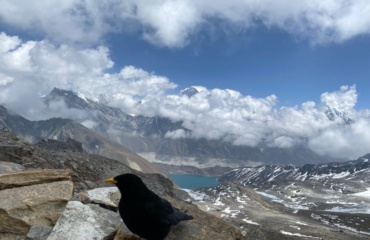 WhatsApp Image 2023-06-27 at 13.29.33
WhatsApp Image 2023-06-27 at 13.29.33
-
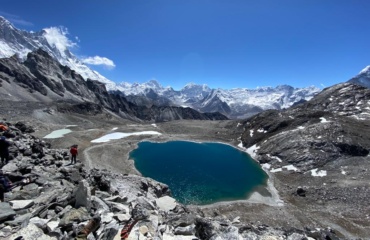 WhatsApp Image 2023-06-27 at 13.29.32
WhatsApp Image 2023-06-27 at 13.29.32
-
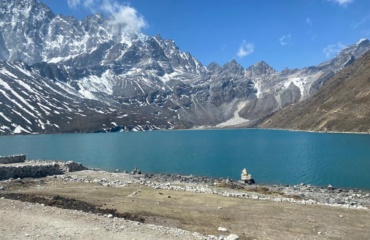 WhatsApp Image 2023-06-27 at 13.29.32 (2)
WhatsApp Image 2023-06-27 at 13.29.32 (2)
-
 WhatsApp Image 2023-06-27 at 13.29.32 (1)
WhatsApp Image 2023-06-27 at 13.29.32 (1)
-
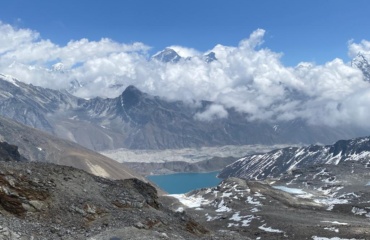 WhatsApp Image 2023-06-27 at 13.29.31
WhatsApp Image 2023-06-27 at 13.29.31
-
 WhatsApp Image 2023-06-27 at 13.29.31 (1)
WhatsApp Image 2023-06-27 at 13.29.31 (1)
-
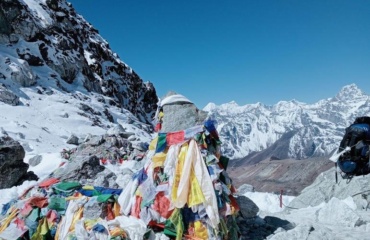 WhatsApp Image 2023-06-27 at 13.29.30
WhatsApp Image 2023-06-27 at 13.29.30
-
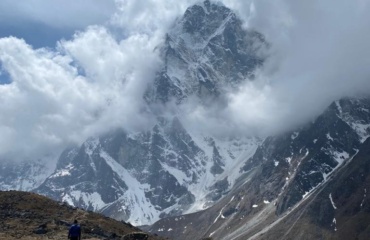 WhatsApp Image 2023-06-27 at 13.29.30 (1)
WhatsApp Image 2023-06-27 at 13.29.30 (1)
-
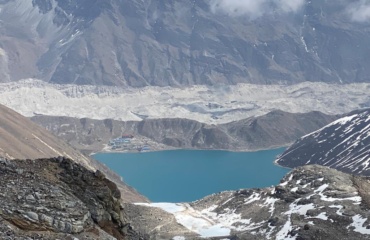 WhatsApp Image 2023-06-27 at 13.29.29
WhatsApp Image 2023-06-27 at 13.29.29
-
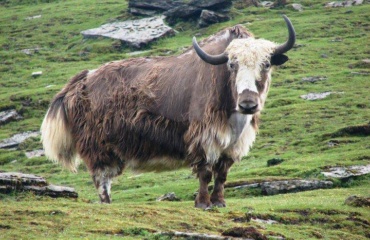 YAK
YAK
-
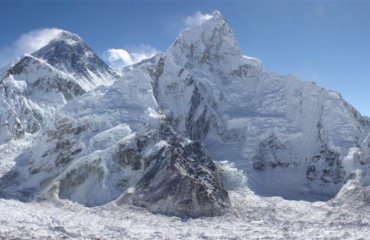 View
View
-
 View From Dingboche
View From Dingboche
-
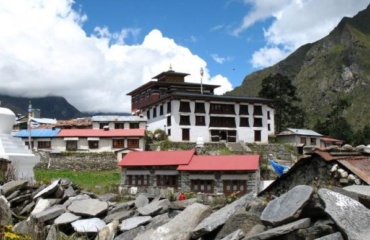 Thynboche
Thynboche
-
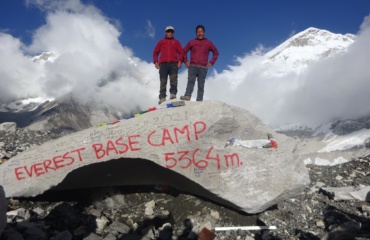 EBC
EBC
-
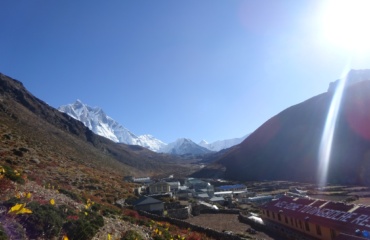 Dibngboche
Dibngboche

